
The itemization for  Soraka revolves around amplifying her healing, granting utility to her team, and enhancing her ability to stay safe while enabling extended teamfights. Her core strength lies in her sustained healing through Soraka revolves around amplifying her healing, granting utility to her team, and enhancing her ability to stay safe while enabling extended teamfights. Her core strength lies in her sustained healing through  Astral Infusion and global presence with Astral Infusion and global presence with  Wish, making her a cornerstone of team durability and survivability. Wish, making her a cornerstone of team durability and survivability.
 Boots of Swiftness are ideal for Boots of Swiftness are ideal for  Soraka, giving her the movement speed necessary to reposition quickly during skirmishes and avoid enemy threats. Since she lacks mobility and is a prime target in teamfights, this extra speed is essential for dodging engages and staying in range to heal allies with Soraka, giving her the movement speed necessary to reposition quickly during skirmishes and avoid enemy threats. Since she lacks mobility and is a prime target in teamfights, this extra speed is essential for dodging engages and staying in range to heal allies with  Astral Infusion. Astral Infusion.
As a support item,  Celestial Opposition offers valuable early-game sustain and utility. Its passive grants bonus resistances to allies after immobilization effects, which pairs well with Celestial Opposition offers valuable early-game sustain and utility. Its passive grants bonus resistances to allies after immobilization effects, which pairs well with  Soraka’s constant presence in the backline, helping her team survive burst damage and skirmishes. Soraka’s constant presence in the backline, helping her team survive burst damage and skirmishes.
 Moonstone Renewer is the core of Moonstone Renewer is the core of  Soraka’s healing identity. Its passive effect empowers her ability to heal consistently during extended fights, especially when she casts Soraka’s healing identity. Its passive effect empowers her ability to heal consistently during extended fights, especially when she casts  Astral Infusion and Astral Infusion and  Equinox. The longer the fight goes, the more powerful the healing becomes, allowing Equinox. The longer the fight goes, the more powerful the healing becomes, allowing  Soraka to outscale most poke and burst compositions with sheer sustain. Soraka to outscale most poke and burst compositions with sheer sustain.
 Redemption complements this by offering massive AoE healing and utility during teamfights, even if Redemption complements this by offering massive AoE healing and utility during teamfights, even if  Soraka is zoned out or temporarily out of position. With smart timing, it can reset a losing fight or secure clutch victories around objectives like Soraka is zoned out or temporarily out of position. With smart timing, it can reset a losing fight or secure clutch victories around objectives like  Baron Nashor or Baron Nashor or  Atakhan. Atakhan.
 Dawncore significantly boosts Dawncore significantly boosts  Soraka’s healing output, reinforcing her power during critical moments. This item passively amplifies her healing and shielding effects, and when paired with Soraka’s healing output, reinforcing her power during critical moments. This item passively amplifies her healing and shielding effects, and when paired with  Moonstone Renewer, creates an unstoppable wave of sustain during teamfights, allowing her team to press forward with confidence. Moonstone Renewer, creates an unstoppable wave of sustain during teamfights, allowing her team to press forward with confidence.
 Shurelya's Battlesong adds a final layer of utility. It grants Shurelya's Battlesong adds a final layer of utility. It grants  Soraka and her team a burst of movement speed, perfect for repositioning, disengaging from bad fights, or engaging aggressively when her team has the advantage. This also gives her a proactive tool to empower initiations or help allies escape dangerous situations. Soraka and her team a burst of movement speed, perfect for repositioning, disengaging from bad fights, or engaging aggressively when her team has the advantage. This also gives her a proactive tool to empower initiations or help allies escape dangerous situations.
Together, these items form a cohesive build that maximizes  Soraka’s healing potential, safety, and utility. She becomes a late-game powerhouse in teamfights, providing endless sustain as long as she remains protected. This build rewards smart positioning, awareness, and decision-making—turning Soraka’s healing potential, safety, and utility. She becomes a late-game powerhouse in teamfights, providing endless sustain as long as she remains protected. This build rewards smart positioning, awareness, and decision-making—turning  Soraka into a reliable anchor for her team throughout every stage of the game. Soraka into a reliable anchor for her team throughout every stage of the game.

 Celestial Opposition
Celestial Opposition
|
VS
|
 Dream Maker
Dream Maker
|
For players who prioritize durability and sustained healing,  Celestial Opposition is often the superior choice. Its "Become Blessed" passive not only reduces incoming damage by a flat percentage but also slows surrounding enemies when the effect ends. This passive aligns perfectly with Celestial Opposition is often the superior choice. Its "Become Blessed" passive not only reduces incoming damage by a flat percentage but also slows surrounding enemies when the effect ends. This passive aligns perfectly with  Soraka's identity as a long-range healer who thrives in extended fights, where she can constantly cast Soraka's identity as a long-range healer who thrives in extended fights, where she can constantly cast  Astral Infusion and weave in Astral Infusion and weave in  Equinox for zoning and silence. Equinox for zoning and silence.
The bonus resistances and damage reduction make it significantly easier for  Soraka to survive poke and dives, giving her more uptime to heal her teammates and reposition. Against aggressive comps with high burst or backline access (e.g., assassins, dive-heavy tops/junglers), this item provides the durability to stay alive and keep her team in the fight. Soraka to survive poke and dives, giving her more uptime to heal her teammates and reposition. Against aggressive comps with high burst or backline access (e.g., assassins, dive-heavy tops/junglers), this item provides the durability to stay alive and keep her team in the fight.
In your playstyle—focused on maximizing healing output over time— Celestial Opposition offers more long-term value, allowing you to tank just enough to survive enemy aggression and keep healing without being forced to disengage. The passive slow can also function as a pseudo-peel, making it harder for enemies to chase down low-health allies or finish you off during skirmishes. Celestial Opposition offers more long-term value, allowing you to tank just enough to survive enemy aggression and keep healing without being forced to disengage. The passive slow can also function as a pseudo-peel, making it harder for enemies to chase down low-health allies or finish you off during skirmishes.
For most situations—and especially in your playstyle that focuses on sustained teamfight presence, safety, and maximizing healing— Celestial Opposition provides far more reliable and impactful utility. Its passive supports Celestial Opposition provides far more reliable and impactful utility. Its passive supports  Soraka’s role as a teamfight anchor, giving her just enough resistance to stay alive and continue casting Soraka’s role as a teamfight anchor, giving her just enough resistance to stay alive and continue casting  Astral Infusion and Astral Infusion and  Wish without interruption. Wish without interruption. |
 Dream Maker is more suited for poke lanes or matchups where you can consistently land autos or spells in lane to trigger shields. It grants a mix of shielding and mitigation, alternating between empowering shields and reducing damage on the next heal or shield you apply. Dream Maker is more suited for poke lanes or matchups where you can consistently land autos or spells in lane to trigger shields. It grants a mix of shielding and mitigation, alternating between empowering shields and reducing damage on the next heal or shield you apply.
While this can look appealing on  Soraka, her healing is single-target and frequent, and she rarely uses shielding tools (besides Soraka, her healing is single-target and frequent, and she rarely uses shielding tools (besides  Redemption or Redemption or  Dawncore's indirect effects). Therefore, you might not fully capitalize on Dawncore's indirect effects). Therefore, you might not fully capitalize on  Dream Maker's strengths unless your entire team is playing an aggressive poke style where shields make a bigger difference than tankiness. Dream Maker's strengths unless your entire team is playing an aggressive poke style where shields make a bigger difference than tankiness.
Additionally,  Dream Maker does less for Dream Maker does less for  Soraka's survivability** compared to Celestial—making it riskier in games where you're a prime target. Soraka's survivability** compared to Celestial—making it riskier in games where you're a prime target.
Choose  Dream Maker only if you're against low-pressure lanes and want to play for short, skirmishy trades in the early game. In all other cases—especially during scaling or when you're the sole enchanter— Dream Maker only if you're against low-pressure lanes and want to play for short, skirmishy trades in the early game. In all other cases—especially during scaling or when you're the sole enchanter— Celestial Opposition will give you more value where it matters most: in the heart of battle. Celestial Opposition will give you more value where it matters most: in the heart of battle. | 
|
|
|
|
|
Bandleglass MirrorThe  Bandleglass Mirror is a highly valuable early-game item for Bandleglass Mirror is a highly valuable early-game item for  Soraka, especially after her first recall. It provides 20 Ability Power, 150 Health, and 10 Ability Haste, giving her a well-rounded boost to both survivability and utility. The Ability Haste is particularly impactful for Soraka, especially after her first recall. It provides 20 Ability Power, 150 Health, and 10 Ability Haste, giving her a well-rounded boost to both survivability and utility. The Ability Haste is particularly impactful for  Soraka, as it allows her to cast Soraka, as it allows her to cast  Astral Infusion and Astral Infusion and  Equinox more frequently—maximizing both healing uptime and zone control. Equinox more frequently—maximizing both healing uptime and zone control.
What truly makes  Bandleglass Mirror core on Bandleglass Mirror core on  Soraka is its passive effect: restoring mana whenever she heals or shields an ally. Since Soraka is its passive effect: restoring mana whenever she heals or shields an ally. Since  Astral Infusion is a spammable, direct heal, this passive ensures a sustainable mana pool, especially in extended trades or teamfights. It effectively delays or even eliminates the need for early mana items, allowing her to remain in lane and contribute continuously without being forced to recall due to mana issues. Astral Infusion is a spammable, direct heal, this passive ensures a sustainable mana pool, especially in extended trades or teamfights. It effectively delays or even eliminates the need for early mana items, allowing her to remain in lane and contribute continuously without being forced to recall due to mana issues.
Additionally,  Bandleglass Mirror builds directly into core support items such as Bandleglass Mirror builds directly into core support items such as  Moonstone Renewer, Moonstone Renewer,  Shurelya's Battlesong, and Shurelya's Battlesong, and  Redemption, making it an efficient and flexible stepping stone that supports a variety of playstyles—whether you're prioritizing healing, movement, or utility. Redemption, making it an efficient and flexible stepping stone that supports a variety of playstyles—whether you're prioritizing healing, movement, or utility.
|
|
|
|
|
|
Amplifying TomeThe  Amplifying Tome is a cost-efficient and flexible item that grants 20 Ability Power, making it a solid pickup for Amplifying Tome is a cost-efficient and flexible item that grants 20 Ability Power, making it a solid pickup for  Soraka when returning to base with limited gold. While AP may not be her primary stat, it still amplifies the healing of Soraka when returning to base with limited gold. While AP may not be her primary stat, it still amplifies the healing of  Astral Infusion and Astral Infusion and  Wish, as well as the damage and silence duration from Wish, as well as the damage and silence duration from  Equinox, allowing Soraka to maintain pressure during early trades and harass when safe. Equinox, allowing Soraka to maintain pressure during early trades and harass when safe.
In most cases, picking up an  Amplifying Tome helps accelerate the completion of Amplifying Tome helps accelerate the completion of  Moonstone Renewer, Moonstone Renewer,  Redemption, or Redemption, or  Dawncore, all of which scale well with Ability Power and support Soraka’s healing-centric kit. It’s also a good fallback item when you can’t afford more expensive components like Dawncore, all of which scale well with Ability Power and support Soraka’s healing-centric kit. It’s also a good fallback item when you can’t afford more expensive components like  Bandleglass Mirror or Bandleglass Mirror or  Kindlegem, offering an immediate value spike while preserving flexibility in your item path. Kindlegem, offering an immediate value spike while preserving flexibility in your item path.
|
|
|
|
|
|
Dark SealThe  Dark Seal is a high-risk, high-reward item that is often purchased by Dark Seal is a high-risk, high-reward item that is often purchased by  Soraka support for its potential to snowball games. It provides 15 Ability Power and 50 Health, and it has a unique passive that grants additional Ability Power for each stack of Glory, with a maximum of 10 stacks. You gain stacks for champion takedowns (kills or assists), making it an item that rewards aggressive play and successful skirmishes. Here's a closer look at the risks and benefits of this item: Soraka support for its potential to snowball games. It provides 15 Ability Power and 50 Health, and it has a unique passive that grants additional Ability Power for each stack of Glory, with a maximum of 10 stacks. You gain stacks for champion takedowns (kills or assists), making it an item that rewards aggressive play and successful skirmishes. Here's a closer look at the risks and benefits of this item:
Benefits:
- Cost-Effective Power Spike: At a low cost of 350 gold, the
 Dark Seal provides an efficient boost in Ability Power and health, making it an attractive early-game item for amplifying Dark Seal provides an efficient boost in Ability Power and health, making it an attractive early-game item for amplifying  Soraka’s damage output and sustain. Soraka’s damage output and sustain.
- Snowball Potential: The unique passive allows
 Soraka to increase her Ability Power significantly by gaining stacks. Each kill grants 2 stacks, and each assist grants 1 stack, with a maximum of 10 stacks providing up to 55 Ability Power when fully stacked. Soraka to increase her Ability Power significantly by gaining stacks. Each kill grants 2 stacks, and each assist grants 1 stack, with a maximum of 10 stacks providing up to 55 Ability Power when fully stacked.
- Synergy with
 Mejai's Soulstealer: The Mejai's Soulstealer: The  Dark Seal builds into Dark Seal builds into  Mejai's Soulstealer, an item that can further increase your Ability Power based on stacks. This synergy can lead to explosive damage potential if you manage to maintain and increase your stacks without dying. Mejai's Soulstealer, an item that can further increase your Ability Power based on stacks. This synergy can lead to explosive damage potential if you manage to maintain and increase your stacks without dying.
Risks:
- Stack Loss on Death: One of the main risks of building a
 Dark Seal is losing 5 stacks upon death. This can significantly reduce your Ability Power if you have built up many stacks, making it a risky item to rely on if you are frequently caught out or targeted by the enemy team. Dark Seal is losing 5 stacks upon death. This can significantly reduce your Ability Power if you have built up many stacks, making it a risky item to rely on if you are frequently caught out or targeted by the enemy team.
- Reliance on Aggression: The effectiveness of the
 Dark Seal heavily depends on your ability to secure kills and assists. If you are unable to participate in takedowns, the item provides relatively low value compared to other Ability Power items. Dark Seal heavily depends on your ability to secure kills and assists. If you are unable to participate in takedowns, the item provides relatively low value compared to other Ability Power items.
- Potential to Snowball Backwards: While the item can help you snowball when ahead, it can also set you back if you are unable to maintain stacks. This makes it crucial to balance aggressive plays with safe positioning, especially in team fights.
|
|
|
|
|
|
BootsYou will buy  Boots if you have excess gold which will later allow you to buy more important boots. They are very useful for roaming and returning to lane sooner. Later I will better describe which ones to opt for based on the situations. Boots if you have excess gold which will later allow you to buy more important boots. They are very useful for roaming and returning to lane sooner. Later I will better describe which ones to opt for based on the situations.
|
|
|
|
|
|
Control WardPurchasing a  Control Ward on the first recall with Control Ward on the first recall with  Soraka in the bot lane can be crucial for maintaining vision control and preventing enemy ganks or roams. If you find yourself pushed back to base earlier than expected, it may indicate that your lane is struggling or that the enemy jungler has been applying pressure. Buying a Soraka in the bot lane can be crucial for maintaining vision control and preventing enemy ganks or roams. If you find yourself pushed back to base earlier than expected, it may indicate that your lane is struggling or that the enemy jungler has been applying pressure. Buying a  Control Ward allows you to regain vision in key areas of the map, such as the river or the enemy jungle entrances, helping to prevent further setbacks and allowing you to safely resume laning. Additionally, placing a Control Ward allows you to regain vision in key areas of the map, such as the river or the enemy jungle entrances, helping to prevent further setbacks and allowing you to safely resume laning. Additionally, placing a  Control Ward in the river bush or the enemy tri-bush can provide valuable information about the enemy's movements, potentially averting future ganks and enabling your team to make informed decisions. Control Ward in the river bush or the enemy tri-bush can provide valuable information about the enemy's movements, potentially averting future ganks and enabling your team to make informed decisions.
|

When playing  Soraka support, the choice of boots can significantly impact her performance and effectiveness in different scenarios. Here’s a breakdown of when to build each type of boots: Soraka support, the choice of boots can significantly impact her performance and effectiveness in different scenarios. Here’s a breakdown of when to build each type of boots:
|
|
|
|
|
 Boots of Swiftness
When to Build:
- Kiting and Positioning: Ideal when you need to constantly reposition, dodge skillshots, and stay at the edge of fights to keep healing with
 Astral Infusion without putting yourself at risk. Astral Infusion without putting yourself at risk.
- Slow Resistance: Their passive reduces the effectiveness of slows, making them a strong choice against champions who rely on movement impairing effects to catch you or your allies.
- Sustained Presence: If your goal is to stick close to your frontline while remaining safe and mobile, these boots help you move quickly between teammates for maximum healing output.
Matchups:
- High Slow / Poke Lanes: Useful versus champions like
 Ashe, Ashe,  Zilean, Zilean,  Senna, or Senna, or  Varus, where slows and poke damage would otherwise make it hard for you to stay in range and heal. Varus, where slows and poke damage would otherwise make it hard for you to stay in range and heal.
- Teamfights and Long Skirmishes: When fights are extended and you’re expected to weave in and out, reposition often, and chain heals with
 Moonstone Renewer and Moonstone Renewer and  Dawncore, the extra movement speed becomes vital. Dawncore, the extra movement speed becomes vital.
|
|
|
|
|
|
 Mercury's Treads
|
|
|
|
|
|
 Ionian Boots of Lucidity
When to Build:
- Maximizing Cooldown Reduction: Choose these boots when you want to reduce the cooldowns of
 Soraka's core abilities like Soraka's core abilities like  Astral Infusion and Astral Infusion and  Equinox, or have Equinox, or have  Wish ready more often for clutch global heals. Wish ready more often for clutch global heals.
- Utility-Focused Playstyle: If you're prioritizing spell rotations, map impact, and frequent ability usage, these boots give you a consistent edge with 10 Ability Haste and a shorter Summoner Spell cooldown.
- When Not Facing Heavy Crowd Control or Burst: If the enemy team lacks significant CC or burst damage, it's safe to go for Lucidity boots to maximize your healing uptime without needing extra tenacity or survivability.
Matchups:
- Low CC or AD Threats: Great against bot lanes like
 Kai'Sa, Kai'Sa,  Twitch, or Twitch, or  Sivir who don’t threaten you with crowd control. Sivir who don’t threaten you with crowd control.
- Roaming and Utility-Oriented Strategy: If your goal is to constantly impact the map, heal your team, and support extended skirmishes, these are excellent.
|

|
|
|
|
|
Moonstone Renewer – Core Healing for Extended Fights Moonstone Renewer is the ideal first core item for Moonstone Renewer is the ideal first core item for  Soraka in virtually every game. It perfectly complements her identity as a sustain-focused enchanter, enhancing her ability to keep teammates alive in both short trades and extended teamfights. Soraka in virtually every game. It perfectly complements her identity as a sustain-focused enchanter, enhancing her ability to keep teammates alive in both short trades and extended teamfights.
What makes  Moonstone Renewer so powerful for Moonstone Renewer so powerful for  Soraka is its consistent healing over time. Every time she uses Soraka is its consistent healing over time. Every time she uses  Astral Infusion or Astral Infusion or  Wish, she not only heals the immediate target but triggers additional healing to the lowest-health ally nearby. This effect stacks beautifully in prolonged fights, turning Wish, she not only heals the immediate target but triggers additional healing to the lowest-health ally nearby. This effect stacks beautifully in prolonged fights, turning  Soraka into an engine of relentless sustain. Soraka into an engine of relentless sustain.
Because  Soraka naturally spams abilities and excels in drawn-out fights, the item's passive synergy rewards her constant healing output, ensuring that her team can outlast opponents through sheer endurance. Unlike burstier mythics, Soraka naturally spams abilities and excels in drawn-out fights, the item's passive synergy rewards her constant healing output, ensuring that her team can outlast opponents through sheer endurance. Unlike burstier mythics,  Moonstone Renewer doesn’t rely on short windows — it scales with how long you stay in the fight, which fits Moonstone Renewer doesn’t rely on short windows — it scales with how long you stay in the fight, which fits  Soraka’s playstyle perfectly. Soraka’s playstyle perfectly.
Whether you're behind or ahead,  Moonstone Renewer provides reliable, scaling healing that grows stronger the longer the game goes, and is always relevant no matter the team composition. It allows Moonstone Renewer provides reliable, scaling healing that grows stronger the longer the game goes, and is always relevant no matter the team composition. It allows  Soraka to stay in the backline, play safe, and turn the tide of fights simply by staying alive and casting her spells. Soraka to stay in the backline, play safe, and turn the tide of fights simply by staying alive and casting her spells.
|

Teamfight Impact & AoE Utility
 Redemption
Redemption
|
VS
|
Scaling Healing Power & Personal Value
 Dawncore
Dawncore
|
 Redemption enhances Redemption enhances  Soraka's core identity as a full support healer. Its active effect allows you to drop a large AoE heal anywhere on the map — perfect for saving allies from range, especially in messy or spread-out teamfights. Soraka's core identity as a full support healer. Its active effect allows you to drop a large AoE heal anywhere on the map — perfect for saving allies from range, especially in messy or spread-out teamfights.
You should choose  Redemption as your second item when: Redemption as your second item when:
- Your team relies heavily on sustain and benefits from strong AoE healing.
- You are often grouped with your team during mid-game skirmishes and fights.
- The enemy team runs poke or sustained DPS compositions, where healing over time is more valuable than burst mitigation.
- You need map-wide impact — for example, you can cast Redemption across the map to save allies or support an ongoing objective fight.
This item synergizes well with  Wish and Wish and  Astral Infusion, amplifying your overall healing output and allowing Astral Infusion, amplifying your overall healing output and allowing  Soraka to influence fights even outside her direct range. Soraka to influence fights even outside her direct range.
|
 Dawncore is an excellent second or third item for Dawncore is an excellent second or third item for  Soraka when you want to amplify your overall healing output over time. Its passive increases both ability power and heal/shield power based on your base mana regeneration, which naturally scales on Soraka when you want to amplify your overall healing output over time. Its passive increases both ability power and heal/shield power based on your base mana regeneration, which naturally scales on  Soraka due to her kit and rune/item choices. Since Soraka due to her kit and rune/item choices. Since  Soraka frequently casts Soraka frequently casts  Astral Infusion and Astral Infusion and  Wish, the bonus healing from Wish, the bonus healing from  Dawncore becomes increasingly valuable as fights go longer and your base regen increases through items and levels. Dawncore becomes increasingly valuable as fights go longer and your base regen increases through items and levels.
You should build  Dawncore second when: Dawncore second when:
- You’re not under constant threat from assassins or heavy dive.
- You want to maximize raw healing power over longer fights.
- You're playing a sustain-focused playstyle where fights are extended and you stay mostly untouched in the backline.
However, if the enemy team is very aggressive or you need more active utility like AoE healing from  Redemption, it's better to build Redemption, it's better to build  Redemption second and delay Redemption second and delay  Dawncore until third item. In that case, Dawncore until third item. In that case,  Dawncore becomes the scaling powerhouse that solidifies your late-game impact by pushing your healing output to its peak. Dawncore becomes the scaling powerhouse that solidifies your late-game impact by pushing your healing output to its peak.
| 
|
|
|
|
|
Shurelya's Battlesong – Engage, Disengage, and Mobility  Shurelya's Battlesong is a fantastic utility mythic when your team relies on strong engage, chase potential, or needs help with disengage. The active movement speed buff helps your allies initiate, escape, or reposition, and synergizes well with Shurelya's Battlesong is a fantastic utility mythic when your team relies on strong engage, chase potential, or needs help with disengage. The active movement speed buff helps your allies initiate, escape, or reposition, and synergizes well with  Soraka's healing by letting her stay near teammates. Soraka's healing by letting her stay near teammates.
When to Build:
- Your team has champions like
 Jarvan IV, Jarvan IV,  Hecarim, Hecarim,  Maokai, or Maokai, or  Aatrox that benefit from movement speed. Aatrox that benefit from movement speed.
- You want to rotate fast or kite/dodge skillshots more easily.
- Your ADC is mobile and can capitalize on speed boosts.
|
|
|
|
|
|
Mikael's Blessing – Anti-CC and Carry Protection Mikael's Blessing is a core utility item when you need to protect your carry or frontline from critical crowd control effects. It allows Mikael's Blessing is a core utility item when you need to protect your carry or frontline from critical crowd control effects. It allows  Soraka to cleanse stuns, roots, charms, and suppressions, often saving fights before they even begin. It also enhances your healing thanks to bonus heal & shield power and mana regen. Soraka to cleanse stuns, roots, charms, and suppressions, often saving fights before they even begin. It also enhances your healing thanks to bonus heal & shield power and mana regen.
When to Build:
- The enemy team has dangerous, reliable CC (e.g.
 Thresh Q, Thresh Q,  Malzahar R, Malzahar R,  Ashe R). Ashe R).
- Your ADC or mid laner is a high-value target that gets focused.
- You already have good healing but need to prevent engages or counter them.
- You’re not the main focus of crowd control and can safely use the active.
|
|
|
|
|
|
Staff of Flowing Water – AP Synergy and Mobility Staff of Flowing Water is ideal when you’re healing or shielding AP-heavy carries, as it provides bonus ability power and movement speed to both you and the ally you heal. It’s a more offensive support option that amplifies spellcasters during mid/late game fights. Staff of Flowing Water is ideal when you’re healing or shielding AP-heavy carries, as it provides bonus ability power and movement speed to both you and the ally you heal. It’s a more offensive support option that amplifies spellcasters during mid/late game fights.
When to Build:
- You have one or more AP carries (e.g.
 Viktor, Viktor,  Cassiopeia, Cassiopeia,  Lillia, Lillia,  Elise). Elise).
- You’re already healing reliably with
 Moonstone Renewer and want to add utility scaling. Moonstone Renewer and want to add utility scaling.
- You want to enhance burst potential while keeping up healing and movement speed.
- You're not facing heavy CC (otherwise, consider
 Mikael's Blessing first). Mikael's Blessing first).
|
|
|
|
|
|
Ardent Censer – Auto-Attack Boost for Carries Ardent Censer gives on-hit damage and attack speed to allies you heal or shield. It’s great in compositions where auto-attack focused champions can capitalize on the buff, especially during prolonged fights. Ardent Censer gives on-hit damage and attack speed to allies you heal or shield. It’s great in compositions where auto-attack focused champions can capitalize on the buff, especially during prolonged fights.
When to Build:
- Your ADC is hyper-scaling or auto-attack reliant (e.g.
 Jinx, Jinx,  Kog'Maw, Kog'Maw,  Aphelios, Aphelios,  Kayle). Kayle).
- You’re healing consistently through
 Soraka’s W – Soraka’s W –  Astral Infusion and R – Astral Infusion and R –  Wish. Wish.
- You’re looking to amplify teamfights, especially when paired with
 Moonstone Renewer. Moonstone Renewer.
- You don't need peel or cleanse, but rather damage amplification for your team.
|
|
|
|
|
|
Mejai's Soulstealer – Snowball and High Reward Scaling Mejai's Soulstealer is a high-risk, high-reward scaling item. Mejai's Soulstealer is a high-risk, high-reward scaling item.  Soraka’s low death rate and constant assist generation allow her to stack it safely, granting an excellent boost in AP and movement speed. The extra AP scales well with her heals, especially mid/late game. Soraka’s low death rate and constant assist generation allow her to stack it safely, granting an excellent boost in AP and movement speed. The extra AP scales well with her heals, especially mid/late game.
When to Build:
- You’re ahead and not dying frequently.
- You’ve already bought your core items (e.g.
 Moonstone Renewer, Moonstone Renewer,  Redemption). Redemption).
- You’re confident in your positioning and the game’s tempo favors you.
- You want to maximize healing output and move faster to reposition and assist allies.
|
|


 Thank You!
Thank You!

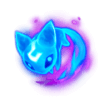
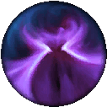
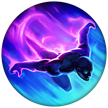
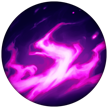


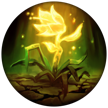



![LoL Summoner Spell: Flash]()
![LoL Summoner Spell: Heal]()
























 Spoiler: Click to view
Spoiler: Click to view Spoiler: Click to view
Spoiler: Click to view

 Spoiler: Click to view
Spoiler: Click to view Spoiler: Click to view
Spoiler: Click to view



















 19,417
19,417
 0
0
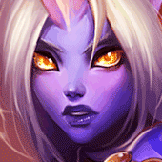











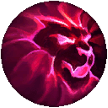
















 YouTube
YouTube
 Twitch
Twitch

You must be logged in to comment. Please login or register.